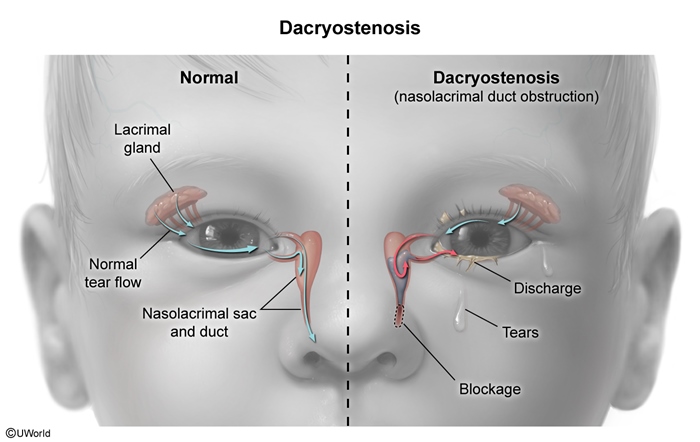Congenital Dacryostenosis
Article Sections
Introduction
Congenital dacryostenosis, also known as congenital nasolacrimal duct obstruction, is a common condition in infants caused by incomplete canalization of the distal nasolacrimal duct in utero.
Pathophysiology
Tears are produced by the lacrimal glands and drain medially into the puncta of the upper and lower eyelids, draining to the lacrimal sac and the nasolacrimal duct into the nose.
Congenital dacryostenosis occurs due to the failure of the nasolacrimal duct to fully develop or open, resulting in obstruction (Figure 1). This obstruction prevents tears from draining properly into the nasal cavity, resulting in tears flowing out of the lacrimal sac and back into the eye.
Clinical presentation
Infants with congenital dacryostenosis typically have symptoms such as excessive tearing, mucoid or purulent discharge from the affected eye, and
Continue Learning with UWorld
Get the full Congenital Dacryostenosis article plus rich visuals, real-world cases, and in-depth insights from medical experts, all available through the UWorld Medical Library.
Figures
